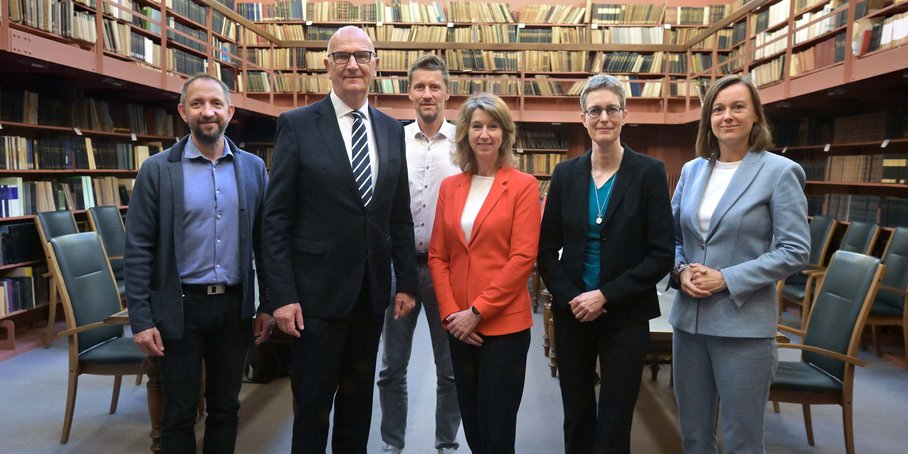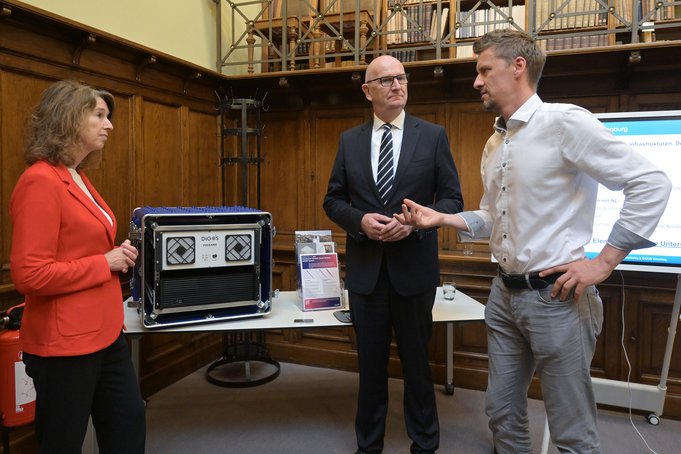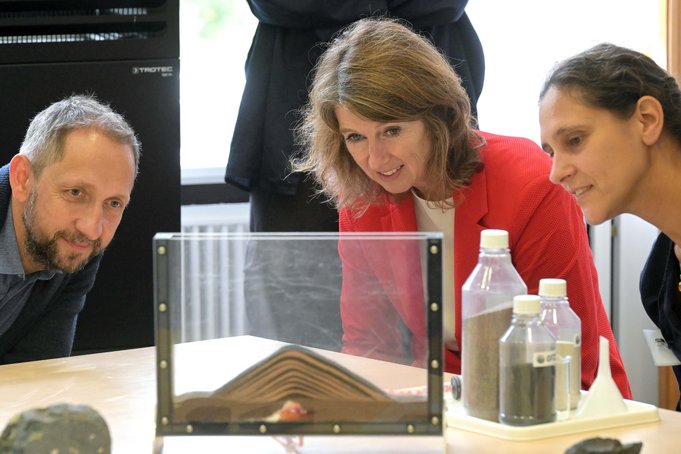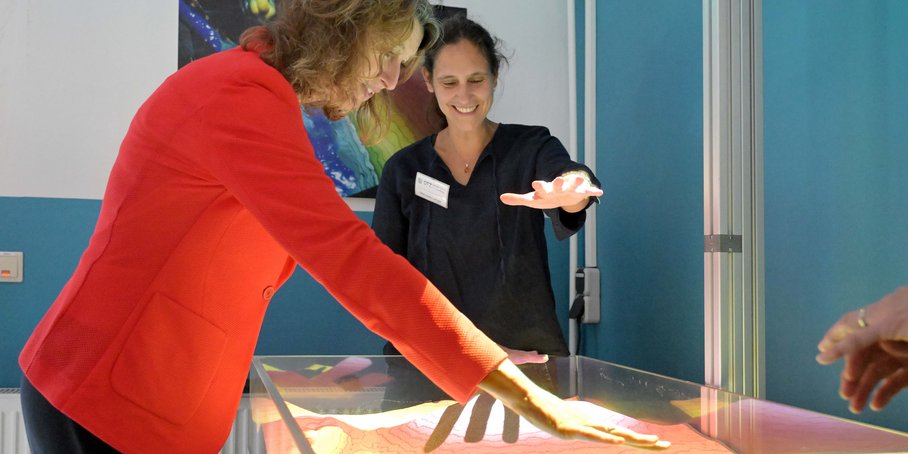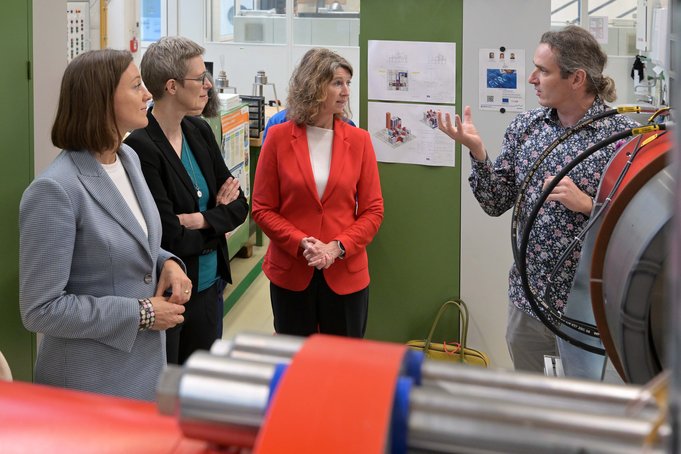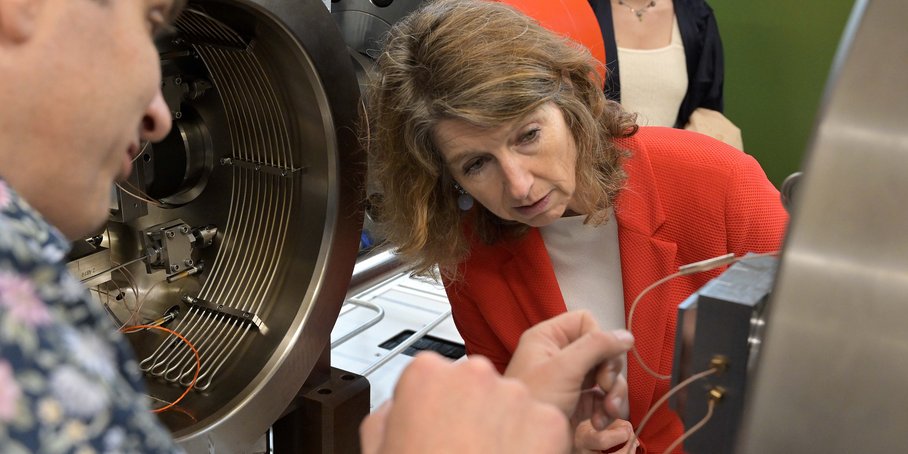On 23 July, the Ambassador of the Kingdom of the Netherlands, Her Excellency Hester Marie-Jeanne Somsen, and the Minister-President of Brandenburg, Dr Dietmar Woidke, visited the GFZ Helmholtz Centre for Geosciences at the invitation of Scientific Director Prof. Susanne Buiter, who herself was born in the Netherlands. The visit was part of the Ambassador's inaugural visit to the Minister-President and also provided an opportunity to discuss important GFZ research topics that are of interest to both countries. One focus was on landscape monitoring with drones and fibre optic sensor technology for monitoring critical infrastructure such as bridges and dykes.
You can find impressions of the visit in the picture gallery above.
Background: Common interests of Brandenburg, the Netherlands and GFZ
Brandenburg and the Netherlands are close partners in business, science and culture. The Netherlands is the second most important export market for companies from Brandenburg after Poland. Numerous scientific institutions cooperate on topics such as climate protection and sustainable energy use. The historical connections are close with the city of Oranienburg and the Dutch Quarter in Potsdam.
The GFZ is the largest non-university research institution in the state of Brandenburg. It is currently actively cooperating with Dutch institutions in 22 EU projects under the Horizon Europe programme. The joint research interests focus on climate protection, emission reduction, sustainable energy use and ecosystem protection, and are delivering significant innovations in these areas. The projects are also directly relevant to important future issues in Brandenburg, such as the decarbonisation of the energy system, the protection of wetlands and forests, and the improvement of the data basis for environmental policy decisions.
Landscape monitoring with drones
Prof. Martin Herold, head of GFZ Section 1.4 “Remote Sensing and Geoinformatics”, presented the potential of remote sensing with drones. Before joining the GFZ in 2021 and also taking up a professorship at the University of Potsdam, Herold conducted research as a professor at Wageningen University in the Netherlands, where he remains affiliated as a “Special Professor” to this day. Herold presented a drone that can, for example, be equipped with hyperspectral sensors. They allow the precise analysis of the sunlight reflected from the Earth – from plants, soil, water, minerals. This makes it possible to draw conclusions about the nutritional status of plants, the nutrient and water content of soils, the pollution of water bodies, and even to monitor minerals and raw materials.
Infrastructure monitoring with fibre optic sensor technology
The topic of fibre optic sensor technology for infrastructure monitoring and disaster control was presented by André Kloth, Managing Director of the GFZ spin-off DiGOS. Another GFZ spin-off, FOMON, is also active in this field. The technology exploits the fact that optical signals travelling through glass fibres change when the fibres are subjected to mechanical stress such as pressure or tension. Possible areas of application for newly installed and existing fibre optic networks include the monitoring of critical infrastructure such as dykes and bridges, in mining and geological underground activities such as geothermal energy, but also monitoring in the context of natural disasters such as earthquakes, volcanic eruptions, landslides and rockfalls.
Laboratory tour by the ambassador
During an in-depth tour that included a laboratory visit, H.E. Ambassador Somsen also learned about research of coupled processes in the investigation of the subsurface for geothermal use and for the underground storage of CO2 and hydrogen. Among other things, Dr.-Ing. Guido Blöcher, working group leader in the GFZ Geoenergy Section, explained the TrueTriax polyaxial high-pressure testing system in the rock deformation laboratory.
A visit to the GFZ school laboratory, headed by Manuela Lange, provided an opportunity to experience innovative experiments for students on different school levels and to discuss the networking of research and the education system and other activities in the field of outreach and knowledge transfer to society.
